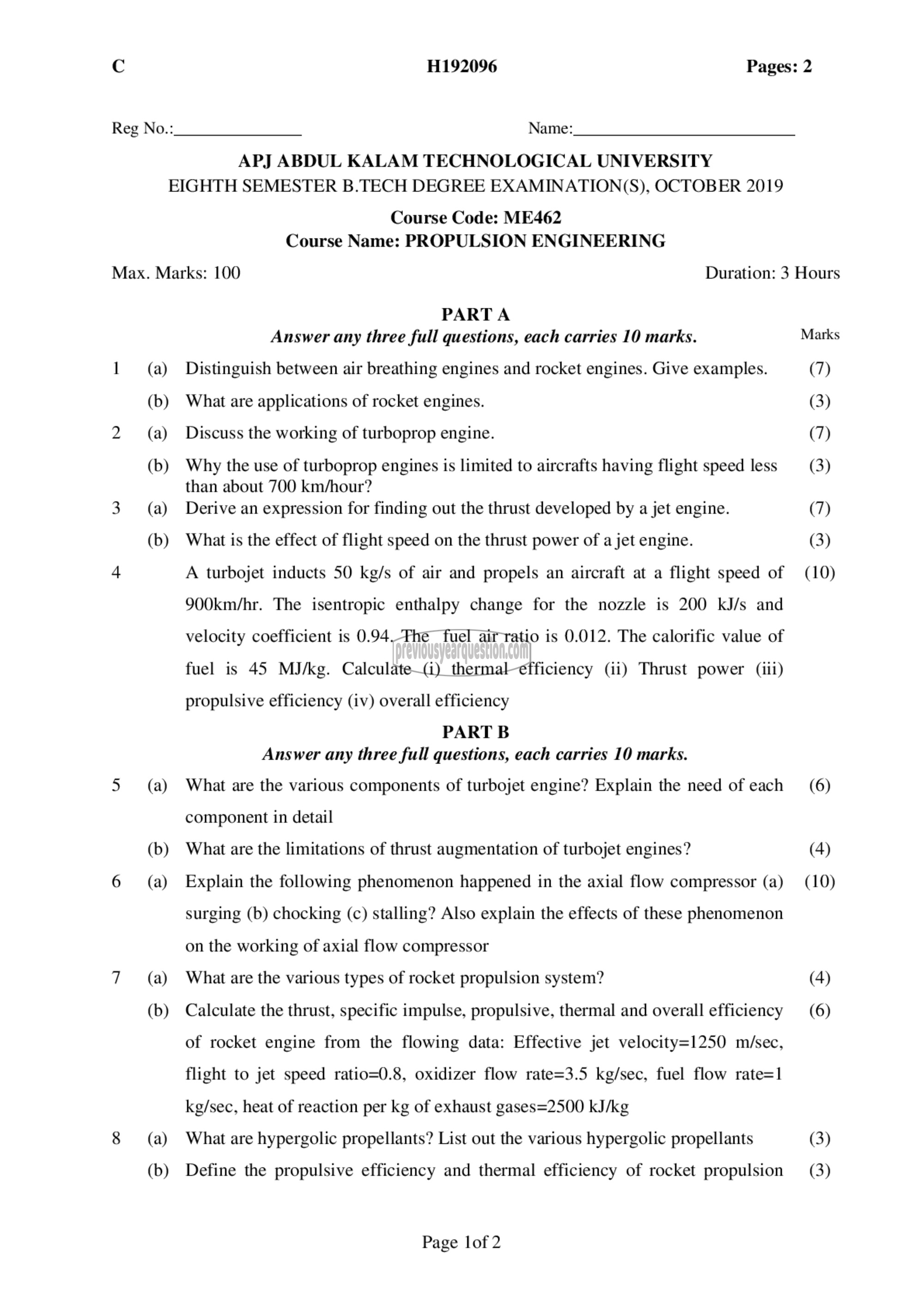APJ ABDUL KALAM TECHNOLOGICAL UNIVERSITY Previous Years Question Paper & Answer
Semester : SEMESTER 8
Subject : Propulsion Engineering
Year : 2019
Term : October
Branch : MECHANICAL ENGINEERING
Scheme : 2015 Full Time
Course Code : ME 462
Page:1
Cc H192096 Pages: 2
Reg No.: Name:
APJ ABDUL KALAM TECHNOLOGICAL UNIVERSITY
EIGHTH SEMESTER B.TECH DEGREE EXAMINATION(S), OCTOBER 2019
Course Code: ME462
Course Name: PROPULSION ENGINEERING
Max. Marks: 100 Duration: 3 Hours
PARTA
Answer any three full questions, each carries 10 marks. Marks
1 (a) Distinguish between air breathing engines and rocket engines. Give examples. (7)
(b) What are applications of rocket engines. (3)
2 (9) Discuss the working of turboprop engine. (7)
(b) Why the use of turboprop engines is limited to aircrafts having flight speed less (3)
than about 700 km/hour?
3 (a) Derive an expression for finding out the thrust developed by a jet engine. (7)
(b) What is the effect of flight speed on the thrust power of a jet engine. (3)
4 A turbojet inducts 50 kg/s of air and propels an aircraft at a flight speed of (10)
900km/hr. The isentropic enthalpy change for the nozzle is 200 kJ/s and
velocity coefficient is 0.94. The fuel air ratio is 0.012. The calorific value of
fuel is 45 MJ/kg. Calculate (i) thermal efficiency (ii) Thrust power (iii)
propulsive efficiency (iv) overall efficiency
PART تا
Answer any three full questions, each carries 10 marks.
5 (a) What are the various components of turbojet engine? Explain the need of each (6)
component in detail
(b) What are the limitations of thrust augmentation of turbojet engines? (4)
6 (a) Explain the following phenomenon happened in the axial flow compressor (a) (10)
surging (b) chocking (c) stalling? Also explain the effects of these phenomenon
on the working of axial flow compressor
7 (லி What are the various types of rocket propulsion system? (4)
(b) Calculate the thrust, specific impulse, propulsive, thermal and overall efficiency (6)
of rocket engine from the flowing data: Effective jet velocity=1250 m/sec,
flight to jet speed ratio=0.8, oxidizer flow rate=3.5 kg/sec, fuel flow rate=1
kg/sec, heat of reaction per kg of exhaust gases=2500 kJ/kg
8 (8) What are hypergolic propellants? List out the various hypergolic propellants (3)
(b) Define the propulsive efficiency and thermal efficiency of rocket propulsion (3)
Page lof 2
